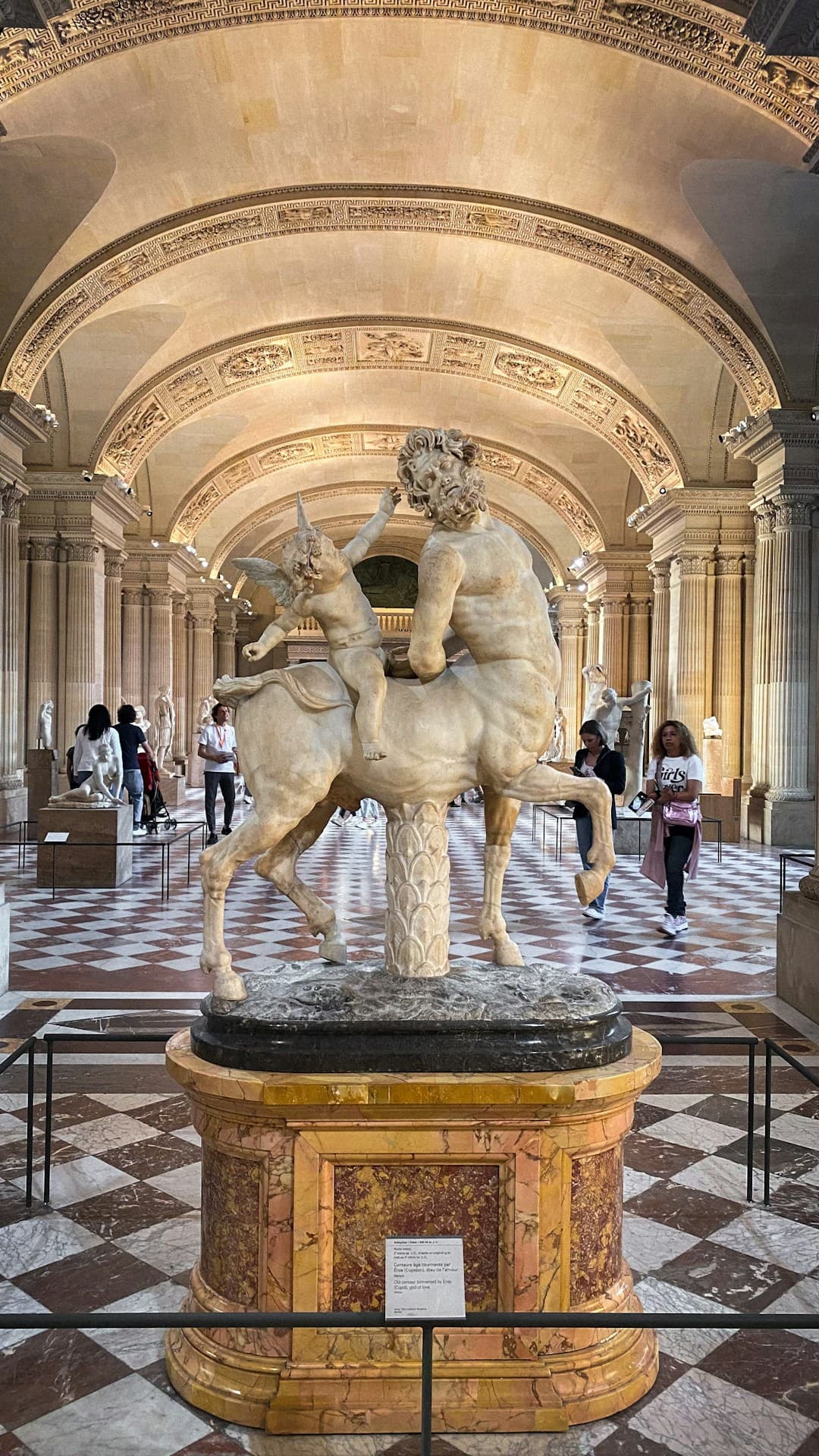Audio GuideLouvre Museum
Musée du Louvre
Former historic palace housing huge art collection, from Roman sculptures to da Vinci's "Mona Lisa."
Set in the center of Paris near the tranquil Tuileries Garden, the Musée du Louvre stands as both an enduring palace and the world’s largest museum. Its story stretches back over eight centuries, beginning in the late twelfth century when it was a fortress built for King Philip the Second to defend Paris. Walls, towers, and a deep moat once stood where grand galleries lie today.
By the time the city flourished in the fourteenth century, the fortress was replaced by a royal residence. French kings, including Charles the Fifth, once called its ornate halls home. Through the ages, the palace took on new shapes as each ruler added their own touches, blending graceful Renaissance façades with classic columns, gilded ceilings, and sprawling courtyards.
The Louvre’s destiny changed forever during the French Revolution when the palace opened as a public museum in the late eighteenth century. Now, anyone could wander its galleries and encounter treasures once reserved for royalty. The collection swelled, especially during the era of Napoleon, whose campaigns brought back masterworks and ancient relics from across Europe and beyond. Some of these pieces later returned to their homelands, but many iconic works remained to inspire millions.
Conflict and war also shaped the Louvre’s role. During both World Wars, staff secretly moved thousands of masterpieces—from the serene Mona Lisa to the towering Winged Victory—to countryside estates for safekeeping. After peace returned, the museum was carefully restored and reopened, preserving both its art and legacy.
Today the experience begins at the elegant glass pyramid, where modern lines meet the dignity of the old stone palace. Inside, vast galleries are divided into eight departments. The Egyptian Antiquities reveal the everyday life and beliefs of pharaohs, while the nearby halls trace the rise of Greece and Rome through statues, mosaics, and temples. Islamic Art glimmers with intricate ornaments, ceramics, and metalwork, offering glimpses into centuries of creativity from Spain to India.
In the painting galleries, visitors encounter Leonardo da Vinci’s famously mysterious Mona Lisa, Delacroix’s vivid Liberty Leading the People, and works by masters like Raphael, Vermeer, and Rembrandt. The sculpture and decorative arts sections showcase everything from marble heroes to royal jewels and delicate tapestries. Each gallery tells the story of a different civilization or artistic movement, with masterpieces that embody dramatic shifts in culture and style across time.
The theme of blending past and present echoes throughout the building. From medieval castle walls visible underground to opulent seventeenth-century salons, history is layered in stone, wood, and glass. The glass pyramid, created in the late twentieth century by architect Ieoh Ming Pei, ties together the Louvre’s ancient spirit with a dynamic sense of renewal.
Beyond its masterpieces, the Louvre reflects the evolution of French culture—from monarchy through revolution, war, and modern rebirth. Its stories reveal a nation’s pride, its openness to the world, and its relentless drive to preserve beauty and creativity. For any traveler curious about art, architecture, or the living spirit of Paris, the Louvre remains an essential destination—a place where the world’s collective heritage comes together under one dazzling roof.



